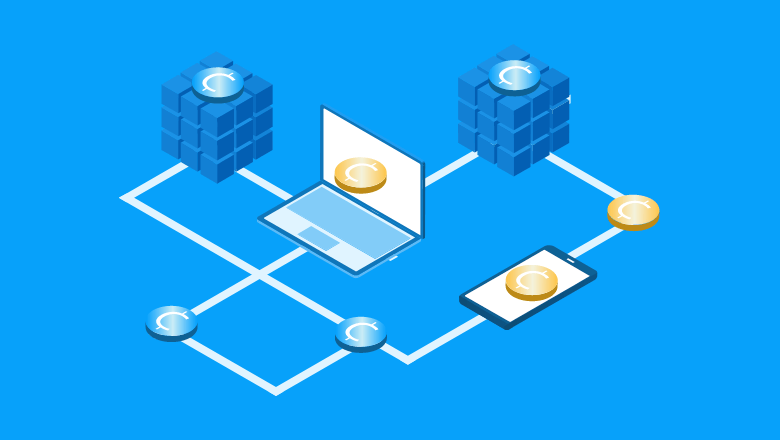Curious about how the Fintech industry is using Python?

At a Glance:
Python has become an indispensable tool in the fintech industry, powering various applications such as trading systems, risk management, payment gateways, and blockchain applications.
Its versatility, readability, and flexibility make it an ideal language for financial institutions looking to streamline operations, reduce costs, and improve their services.
Python’s popularity has grown exponentially in recent years, and it’s now one of the world’s most widely used programming languages.
Its user-friendly syntax and a vast library of modules make it easy for developers to build complex applications quickly and efficiently.
The fintech space, where speed, accuracy, and security are critical, has embraced Python.
With Python developers, fintech companies can build automated trading systems, create sophisticated risk management models, and develop blockchain applications.
Its ability to handle large datasets, perform complex calculations, and integrate with other programming languages and systems make it a natural choice for financial institutions looking to stay ahead in a rapidly evolving industry.
As such, it’s no surprise that Python has become the go-to language for many fintech startups and established firms.
The financial technology (fintech) industry is rapidly evolving, and Python has emerged as one of the most popular programming languages in the field.
Python’s simplicity, versatility, and ease of use have made it a favorite among developers in fintech, enabling them to create complex financial applications quickly and efficiently.
We’ll examine how Python powers the fintech space and explore why it has become a popular choice among fintech companies.
Why Python Is Ideal for Fintech
Python’s popularity in fintech is no coincidence. Its design philosophy emphasizes code readability and simplicity, making it easy for developers to write, maintain, and modify code.
Additionally, Python has a large and active developer community that continuously contributes new libraries, modules, and tools that enable developers to create complex applications quickly.
Python’s versatility also makes it an ideal choice for fintech. Complex applications can be created using object-oriented programming (OOP) capabilities and multiple programming paradigms, including functional and procedural.
Python’s built-in support for data analysis and scientific computing libraries, such as NumPy, SciPy, and pandas, make it easy to work with large datasets, a critical requirement in the fintech industry.
Additionally, its support for machine learning and artificial intelligence libraries, such as TensorFlow and PyTorch, makes it possible to build complex models that can analyze financial data, detect fraud, and make predictions.
Python’s Role in Fintech Applications

Trading systems, payment gateways, and mobile banking apps are all built with Python. Here are some ways Python is used in fintech.
1. Trading Systems
Trading systems are one of the most popular applications of Python in the fintech space. Large amounts of data can be handled by Python, which makes it ideal for trading systems.
Python is widely used in quantitative finance, where it is used for everything from data analysis to building sophisticated trading algorithms.
Python’s popularity in the trading world can be attributed to several factors. Firstly, it is an open-source language, which means that it is free to use and can be easily modified to suit the specific needs of a trading system.
Secondly, Python has a large and active community, so plenty of resources are available for developers looking to learn or improve their Python skills.
Python’s versatility also makes it an ideal language for developing trading systems. It can be used for everything from simple analysis and visualization to developing complex machine-learning models.
Additionally, Python has many libraries that make it easier to work with data, such as pandas for data analysis and NumPy for scientific computing.
Python is also famous for developing trading systems because of its speed. While Python is an interpreted language and may not be as fast as compiled languages like C++ or Java, it is still relatively fast compared to other interpreted languages like R or MATLAB.
Additionally, Python has a range of tools for optimizing code, such as the JIT (just-in-time) compiler in PyPy and Cython, which allows developers to write Python code that runs almost as fast as C code.
Examples of Trading Systems

There are many examples of successful trading systems built using Python. One such system is Zipline, an open-source backtesting and live-trading engine many hedge funds and trading firms use. Zipline was developed by Quantopian, a firm that provides a platform for building and testing trading algorithms.
Another example is PyAlgoTrade, a library for backtesting and executing algorithmic trading strategies. Traders can easily integrate PyAlgoTrade, which is user-friendly, with numerous widely-used trading platforms, including Interactive Brokers and OANDA.
Section Summary
Python’s popularity in fintech is primarily due to its versatility and ease of use. For trading systems, its ability to handle large amounts of data and its tools for optimizing code make it ideal. Developers build many successful trading systems using Python.
Its active community and range of libraries make it an excellent choice for developers looking to develop their skills in this space.
2. Risk Management

Another area where Python is making a significant impact in the fintech industry is risk management. Risk management is a crucial aspect of the financial sector. It involves analyzing and mitigating potential risks arising from various financial activities.
Python’s flexibility and versatility make it an ideal tool for developing risk management solutions for financial institutions.
Python-based risk management solutions can help banks and other financial institutions to analyze market data, assess potential risks, and make informed decisions on investment portfolios.
Developers can use Python’s wide variety of libraries and tools to build intricate risk models for financial institutions such as banks.
For instance, they can create credit risk models that assess the creditworthiness of borrowers.
Python’s Scikit-learn library is a popular choice for developing credit risk models. Python offers a variety of machine learning algorithms that developers can use to analyze vast datasets and generate predictions.
Non-technical staff in financial institutions can use Python risk management platforms because of its popularity and ease of use.
For example, the Open Risk Manual is an open-source project that provides risk management tools and templates that risk managers can use for traders and other financial professionals.
Section Summary
In the fintech industry, Python’s flexibility, versatility, and ease of use make it a great tool. Python’s libraries and tools can be used to build complex risk models, analyze market data, and evaluate potential risks.
It is an essential tool for financial institutions looking to manage risk effectively.
3. Payment Gateways
Another area where Python plays a critical role in fintech is payment gateways. Payment gateways are software applications allowing merchants to accept customer payments.
In the fintech industry, payment gateways are vital components that enable companies to handle transactions securely, quickly, and efficiently.
Payment gateway developers extensively use Python for its ease of use and flexibility. Payment gateways built with Python can handle different transactions, including credit and debit cards, bank transfers, and mobile payments.
They also enable companies to accept payments in other currencies and manage multiple payment channels.
Examples of Payment Gateways

One excellent example of a payment gateway built with Python is Stripe. Stripe is a payment gateway that has become one of the most popular in the fintech industry.
The company provides a simple, user-friendly interface allowing businesses to quickly integrate their payment processing with their websites or mobile applications.
The developers built Stripe’s payment gateway using Python, relying on the language’s flexibility and scalability. They designed the platform to efficiently handle high volumes of transactions and process payments from various channels and currencies.
Python’s extensive library support also makes it easy for developers to add new features and functionality to the platform.
Another example of a payment gateway built with Python is Braintree. Braintree is a payment gateway that provides companies with various payment solutions, including credit and debit card processing, PayPal integration, and mobile payments.
The developers built the platform with Python and utilized its versatility and scalability to provide a wide range of features and functionality.
Braintree designed its payment gateway to be friendly for developers, enabling businesses to seamlessly integrate the platform with their websites or mobile applications. The platform is also highly scalable, enabling companies to handle large transaction volumes easily.
Python’s extensive library support also makes it easy for developers to add new features and functionality to the platform, ensuring businesses can stay competitive in the fast-paced fintech industry.
Section Summary
In the fintech industry, Python powers trading systems, risk management, and payment gateways.
Its ease of use, flexibility, and scalability make it ideal for fintech developers.
Python will play a significant role in powering the next generation of financial technologies as the fintech industry continues to evolve.
4. Blockchain Applications

Fintech companies are utilizing Python to power their blockchain applications. Blockchain technology has revolutionized financial transactions by securely storing, transferring, and recording information.
Python is the preferred programming language for developing blockchain applications due to its simplicity, flexibility, and high-level functionality.
One of the most popular blockchain applications developed using Python is Ethereum, which has a programming language called Solidity. Ethereum allows developers to build decentralized applications (dApps) using smart contracts.
These smart contracts are self-executing programs that automate verifying and enforcing an agreement’s terms, eliminating the need for intermediaries.
Developers utilize Python to create various blockchain applications, among them Hyperledger. This initiative involves collaborative efforts across industries to build an open-source blockchain platform specifically for businesses.
Businesses can build and manage blockchain networks using Hyperledger Fabric, which implements the Hyperledger blockchain technology framework.
Furthermore, developers are using Python to create blockchain applications for supply chain management, identity verification, and authentication, and even voting systems.
For example, the VeChainThor blockchain platform, built using Python, allows businesses to track and verify the authenticity of their products from the manufacturing process to the end consumer.
Section Summary
Python has become a key player in fintech, powering trading systems, risk management, payment gateways, and blockchain applications. Its ease of use, flexibility and high-level functionality make it a popular choice among developers.
Its growing popularity is a testament to its power and potential. Python will likely play a significant role in driving innovation and transformation in fintech.
Wrapping up about how the Fintech industry is using Python
A powerful and versatile platform for building complex financial applications, Python has become a key player in the fintech industry.
Fintech companies benefit from its machine learning, artificial intelligence, and data analysis capabilities.
As the industry evolves, developers will continue to create new and exciting fintech applications using Python. With its vast array of libraries, tools, and frameworks,
Matthew is a technical author with a passion for software development and a deep expertise in Python. With over 20 years of experience in the field, he has honed his skills as a software development manager at prominent companies such as eBay, Zappier, and GE Capital, where he led complex software projects to successful completion.
Matthew’s deep fascination with Python began two decades ago, and he has been at the forefront of its development ever since. His experience with the language has allowed him to develop a keen understanding of its inner workings, and he has become an expert at leveraging its unique features to build elegant and efficient software solutions.
Matthew’s academic background is rooted in the esteemed halls of Columbia University, where he pursued a Master’s degree in Computer Science.
As a technical author, Matthew is committed to sharing his knowledge with others and helping to advance the field of computer science. His contributions to the scientific computer science community are invaluable, and his expertise in Python development has made him a sought-after speaker and thought leader in the field.


![15 Most Contributed Python Projects on GitHub [Stats]](https://hirepythondeveloper.com/wp-content/uploads/2024/03/15-Most-Contributed-Python-Projects-on-GitHub-Stats-1-150x150.png)




